By ANSELM BEACH and Patricia Aufderheide
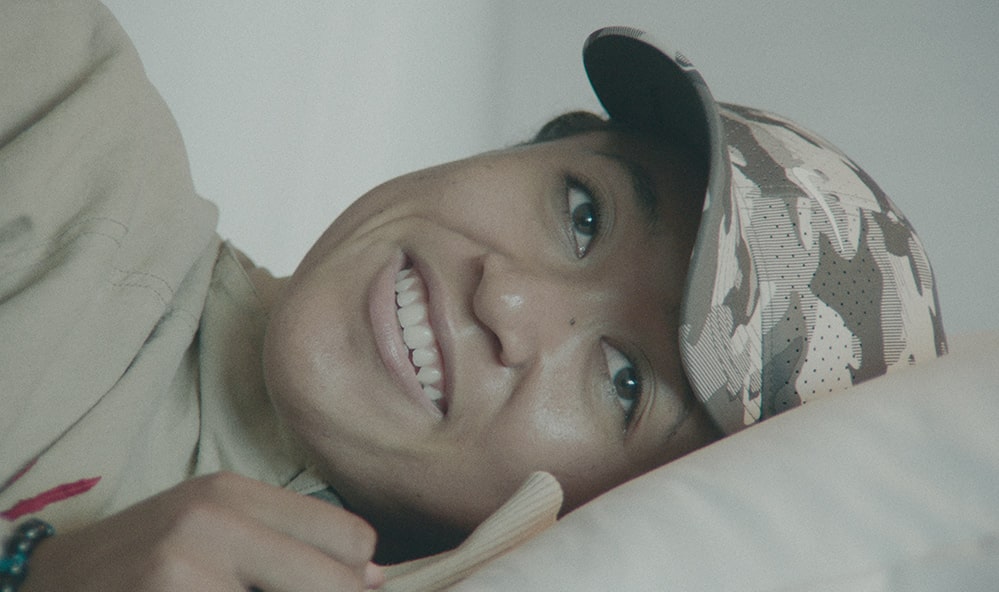
AFI Docs, held in Washington, DC, but organized out of AFI’s Los Angeles office, strives to create a menu that would appeal to politically obsessed Washingtonians and area filmmakers. Largely unconcerned with premieres, AFI Docs leans toward handsomely produced work, big issues, and synergies with its partners. This year, public TV was back as usual, and so were a wide collection of media companies (Apple+, as lead sponsor, plus HBO, Netflix, NatGeo, as well as journalistic outlets). The Audience Award went to the captivating Storm Lake, by Jerry Risius and Beth Levison, about a small-town Iowa newspaper that, unlike most, is still family-owned. Look for it on public TV.
Most of the films were on the verge of release, mostly on your television—a trend that is eating away at the existential purpose of film festivals that showcase new work. As it is, the greatest beneficiaries are the large media companies that get virtually free promotion in these festivals. Many of the films were well within the high-gloss mode of Naomi Osaka (the opening night film), Roadrunner: A Film About Anthony Bourdain, and LFG. There was a strong emphasis on BIPOC and social justice issues as well.
Part I: By Anselm Beach
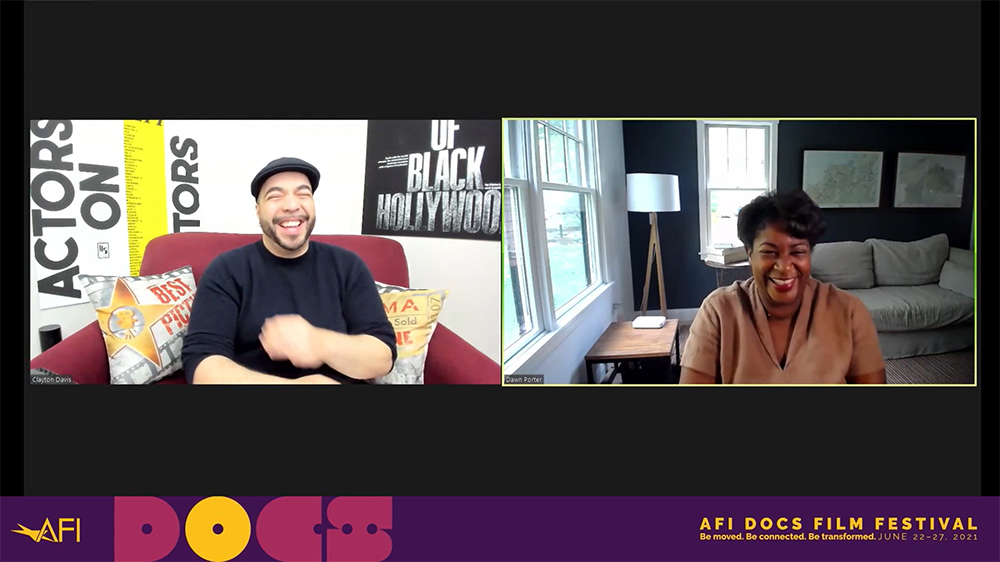
Guggenheim Winner Dawn Porter
This year’s Guggenheim Symposium honored the career of lawyer-turned-documentary filmmaker Dawn Porter, whose most recent film Rise Again: Tulsa and the Red Summer (Hulu) was showcased at AFI Docs. Porter’s extraordinary career is dotted with courageous documentaries on issues that affect Black realities: Gideon’s Army, about public defenders; Trapped, about anti-abortion efforts in Texas and Alabama; and John Lewis: Good Trouble. During her symposium interview with Variety’s Clayton Davis, Porter reflected that the imprints a film can leave upon an audience are not only limited to the viewer but can extend to the filmmaker. For her, these imprints come from “bearing witness” to the stories told on screen.
This idea of bearing witness exists at the heart of Rise Again as it explores the 1921 Tulsa Race Massacre, a tragedy that was largely unknown to the American public until it was featured in two recent HBO science-fiction series. These series are relevant when discussing Rise Again, since the film demonstrates how often Black people are not taken at their word when they describe atrocities enacted against them in the name of white supremacy; their stories are often relegated to the realm of historical fiction.
In fact, Rise Again is less about the uprising than the constant work of recovering its history. The film follows Washington Post reporter DeNeen L. Brown as she covers the City of Tulsa’s efforts to locate the mass gravesites of massacre victims that witnesses and their descendants have spoken of for nearly a century, but were largely ignored. Brown visits historians and librarians to pore over newspaper clippings, photographs and artifacts that would provide the legitimacy necessary for white audiences to accept the more jarring of the massacre’s details—an American plane being used to drop bombs on American citizens, for example—while questioning why the stories told by the survivors are not enough. Such is the burden that Black people carry in sharing the Black experience: They must enter and re-enter the pain of these traumatic events to ensure that they are accepted into the carefully curated narrative of a country that prides itself on its freedoms.
Poet, teacher and speaker CeLillianne Green, one of Rise Again’s remarkable ensemble of interviewees, proclaims in the film, “But for [the Black Americans that came before us], we are not here…all that they endured, went through, died for, fought for, lived for and loved for; but for them, we are not here.” While situating the Tulsa Race Massacre within the greater context of the race riots and massacres of what has come to be called the Red Summer of 1919, Rise Again humanizes those who lived and died through these events. We see their faces, their families, their faith, and their fight to remain resilient, and this is ultimately what elevates Rise Again above Black trauma porn.
Films and Representation
Though this was the second virtual AFI Docs, this year’s festival was contextualized by the tumultuous events of 2020: the COVID-19 pandemic, a divisive election and political transition, and a racial reckoning spurred on by a summer of protest. Many of this year’s offerings shared a theme of activism rooted in the underlying issues that the pandemic has exposed.
The First Step, for example, was shot between 2015 and 2019, and yet as a film that looks intimately at what “bipartisan effort” means these days, its timeliness is evident. Directed and produced by Brandon and Lance Kramer, The First Step follows political commentator Van Jones in his effort to gain bipartisan support for a prison reform bill known as the First Step Act. The First Step does not shy away from depicting Jones’ status as a controversial figure due to his willingness to cross the aisle to advance the issues he’s most passionate about: criminal justice reform and the addiction crisis.
This is, no doubt, Jones’ film, but a few things save The First Step from being what some have called a Van Jones vanity project. Brandon Kramer noted that while Jones was his entry point into the story of the First Step Act, the filmmaker’s original goal was to show what a bipartisan effort really looks like. Much of the film’s 300 hours of footage—which was cut together by a four-person editing team—was shot before knowing whether the bill would pass. As a result, the audience is given access to Jones as he grapples with, defends, and at times is defensive about, the efficacy of his methods. It is often a lonely road. The filmmakers address the dynamics between Jones and Trump Senior Advisor (and son-in-law) Jared Kushner, but the Kramer brothers give far more compelling screen time to grassroots organizers and activists on both sides, who share a desire to address the addiction crisis impacting their communities.
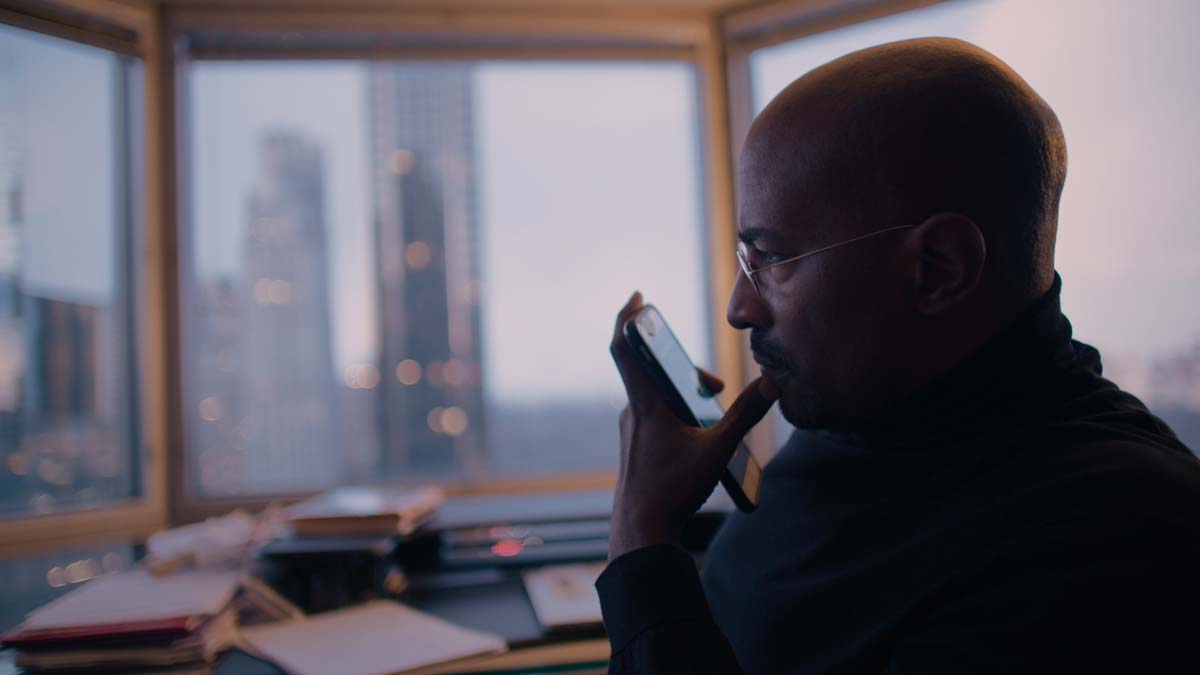
The First Step does wade into Jones’ controversial status within the Black community, but this is not a simple commentary by white men on an internal debate. Kramer paid tribute to the late Lewis Erskine, who mentored the project, for encouraging the director to include the footage and figures that are sure to spark more criticism for Jones and potentially the film itself. “We have to be willing to try things that we ourselves are afraid of doing,” editor Stephen Golliday shared as he reflected on Erskine’s influence. “And the joy of doing that…I like to think came out in the work of my colleagues.”
The Slow Hustle (HBO) made its world premiere at AFI Docs, and continues the conversation surrounding the systemic roots of police brutality against the Black community. Director Sonja Sohn and producer Marc Levin examine the death of Baltimore Detective Sean Suiter, who was shot in broad daylight the day before he was to testify in federal court against eight Baltimore police officers on trial for one of the largest BPD corruption scandals to date. The subsequent police investigation is most noteworthy for advancing the theory that Suiter died by suicide, while his family and many prominent community members, including The Beast Side author D. Watkins, believe he may have been killed to protect the very department he was set to testify against.
While Sohn and Levin’s previous work, Baltimore Rising, examines the protests that were sparked after the death of Freddie Gray and the unsuccessful prosecution of the officers involved, The Slow Hustle dissects the blue wall of silence, behind which much of the corruption within the BPD takes place. Here, it is less about the laws and systems that lead to police corruption, and more about the culture that leaves few officers, even those as celebrated as Detective Suiter, unscathed. The Slow Hustle demonstrates how the self-protective police culture turns even Black officers against the very communities they are positioned to protect. It, like Philly DA (see below), shows the importance of focusing on the system rather than the event.
The Hindsight Project, a joint effort of Reel South, Firelight Media and Center for Asian American Media and sponsored by the Corporation for Public Broadcasting, addresses how the disparities and inequities experienced by communities of color were exposed and exacerbated by the pandemic. Six shorts represented BIPOC experiences in the American South and American territories. Following their world premiere at AFI Docs, these films will show on Southern PBS stations and be available on PBS streaming services. Their stories showcase the agency of the BIPOC subjects to address the inequities that arose from the pandemic. For example, This Body explores the intersection of the disparities within COVID’s impact on the Black community and the history of medical experimentation on Black bodies as the young Black woman at the center of the film enters a COVID vaccine trial. Comida pa’ los Pobres follows one activist’s efforts to address the food insecurity triggered by the hurricanes in Puerto Rico and intensified by COVID-19.
It’s a good start and potentially, part of a response. Recently, PBS was the subject of a letter from the Beyond Inclusion collective of BIPOC filmmakers criticizing the organization for its lack of diversity in the stories it presents and the filmmakers who tell those stories. However, the $20,000 grant these filmmakers received to complete their work, coming from three small organizations battling for diversity within public TV, is heavily outweighed by the funding and airtime given to white filmmakers in public TV’s mainstream.
Part II: By Patricia Aufderheide
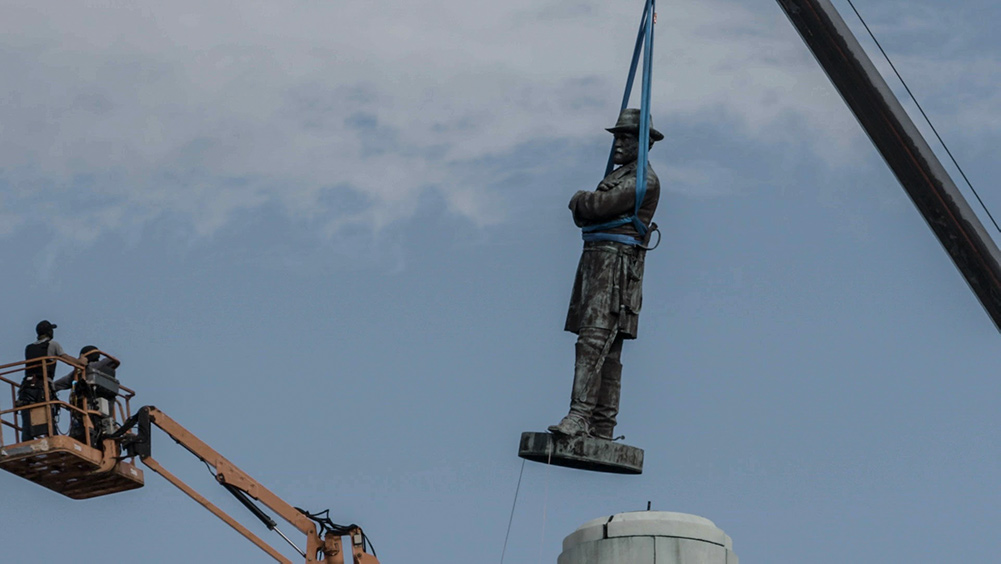
Activist Entertainment
Several other films did a good job of creating genuinely engaging entertainment. AFI Docs viewers got a sneak peek at the ITVS film The Neutral Ground, which premiered on July 5 as the season opener on POV. The wry Filipino-Black comic CJ Hunt, who directed and wrote the film, takes us on a tour of the recent efforts to take down Confederate monuments, tracking the arduous work in New Orleans to remove just four statues in a town with hundreds of honorifics to Confederacy. In a crisply edited series of vignettes that match Hunt’s stand-up comedy style, he walks us through the living mythology of the Lost Cause, and man-in-street cluelessness about history, as well as his own ambivalence about his racial status (he describes himself as looking like a Mexican kid). Hunt ironizes the outrageous until, during a trip to Charlottesville, he runs right into an even uglier reality for which there are no jokes. This film has it all—social relevance, humor, can’t-stop-watching pace, showcasing of a rising star, and a human-level personal feel—and it’s available to Americans and school kids everywhere, for free, thanks to public TV.
If you’re looking for personal storytelling with a bite, watch Daughter of a Lost Bird, made by one Native American woman (Brooke Pepion Swaney) about another (Kendra Mylnechuk Potter, also one of the producers of the film). Kendra, raised happily outside her culture, grapples with her responsibilities to participate, both as a daughter and as a mother, in a Native community that has survived wave after wave of genocide. It’s as real, thoughtful, kind and provocative as it gets (and it’s destined for public TV). And I hope that the Mexican doc Luchadoras, by Paola Calvo and Patrick Jasim, gets shown here. It’s an intimate portrait of three women fighting on three fronts: the women’s wrestling scene, poverty, and the misogyny that, among other things, has led to a brutal, decades-long pattern of murders in Ciudad Juárez.
Another good example of watchable activist work was Participant’s White Coat Rebels, directed by Greg Barker, about medical students and doctors who organize to confront Big Pharma’s scandalous grip on American medicine. It’s a good story, with great characters. It also has that manufactured feel of a lot of Participant’s works, where essays are interwoven with character portraits. But it makes a killer case that pharma isn’t controlling just drugs, but the entire chain of medical decision-making.
Series
The festival celebrated the rise of the docuseries, showcasing several major projects. The eight-part Philly DA, a project of public broadcasting’s Independent Television Service (ITVS), just completed its PBS launch, and was the subject of a two-part panel at AFI Forum. Smart, sassy and confrontational like its central character, the progressive Philadelphia District Attorney Larry Krasner, the series is completely binge-worthy. Proof: I invited a civilian just looking for entertainment to binge-watch with me, and now we can’t stop talking about it.
It is also a perfect counterexample to the true-crime genre. It’s not about cops and criminals, but about systemic inequities that add up to cruel injustice. It doesn’t look for the bad guy to resolve the story; it finds inspiring and fascinating characters like LaTonya Myers, a young gay activist for criminal justice reform, who is fighting to get off a near-decade parole sentence. Krasner is not the conquering hero but a committed, clear-eyed former public defender who faces political and management challenges he doesn’t have experience in handling. It is also not about an incident but a nationwide movement to elect progressive DAs to change criminal justice’s fundamental priorities.
The makers of Philly DA—Ted Passon, Yoni Brook and Nicole Salazar—faced challenges in funding this ambitious series, they said. The potential venues for ambitious series are few, and most of those would expect something more true-crimey—a genre that pretty much guarantees viewership. Public broadcasting was the only place, they said, that didn’t need convincing that the topic was important, or that a Philadelphia-rooted story was of national importance. (They also partnered with Topic, a streamer.)
9/11: One Day in America, a lengthy docu series that takes us from the beginning to the end of September 11, 2001 in Lower Manhattan, was made with the 9/11 Memorial & Museum. The three-hour sample shown at the festival was upsetting, not only for the horror of the event itself but for the voyeurism and sensationalism. The opening heavily played on the viewer’s dread of the upcoming catastrophe, and then as the event unfolded, the narrative hewed closely to the contrast between the horror of death and the inspiration of what people could do to help and comfort each other.
Watching this made me wonder if anyone needs a docuseries taking them, moment by moment, through that day, particularly in a way that seems both voyeuristic and sentimental. What is the context within which the knowledge of this humanitarian disaster is lodged? 9/11 was both the result of geopolitics that our nation’s leaders had actively constructed as well as responded to, and the way we understand it is also a way of understanding what we accept as America’s geopolitical role. The full series, directed by Daniel Bogado, will premiere on National Geographic.
Obama: In Pursuit of a More Perfect Union (HBO), a high-gloss production with plenty of big political names, charts former President Barack Obama’s background and rise through the political ranks. The portions shown at the festival track nicely with his memoirs. It burnishes, in the episodes shown, the president’s reputation without charting the political complexities of the era, presaging the Trumpian nightmare to come.
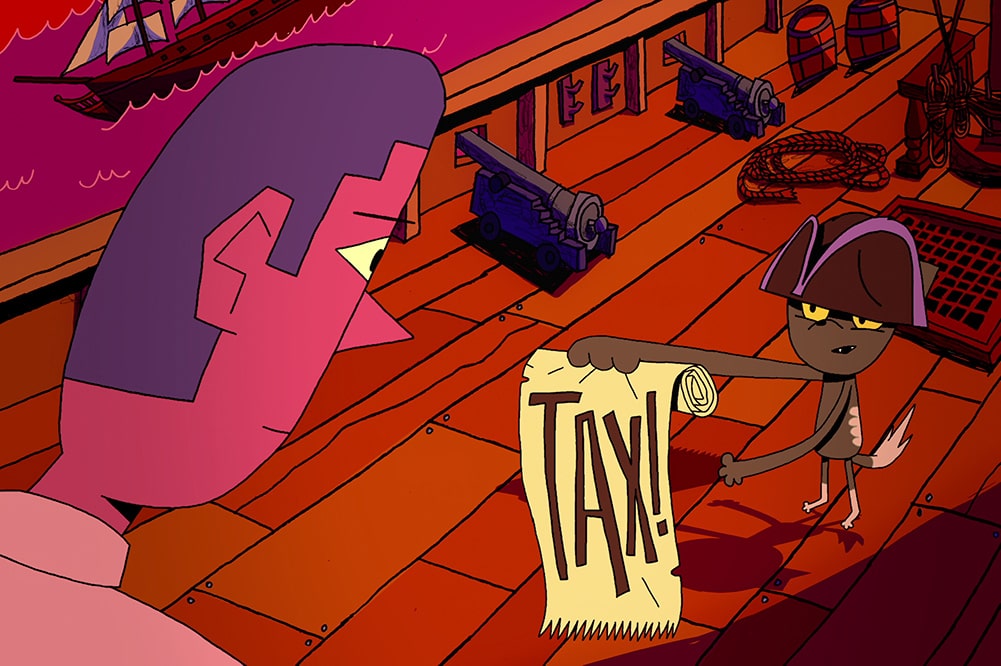
We the People (Netflix) was possibly the most ambitious, and definitely the most disappointing of the series. This Higher Ground production (the Obamas’ media production unit) was designed as a series of youth-friendly, bite-sized civics lessons. Major musical talent and enormous animating artistry were invested in the project.
But reducing core concepts to soundbites, in a time of democratic crisis, can be parlous. The First Amendment episode takes an intrepid young animated character from dissent under an oppressive government to freedom and light. Of course, this is exactly how the devotees of Fox News and OAN see their situation. And many of the January 6th insurrectionists were sure they were using their First Amendment rights to defend their nation.
The taxes episode celebrates what we get for our money, like roads and safe medicines. And it assures us that the wealthier pay more. But it’s hard to find someone who doesn’t know that the rich pay nothing or almost nothing, and that taxes fall most heavily on the salaried poor. Bridges crumble and sinkholes form in our poorly maintained infrastructure. And the FDA’s record is shameful on, among others, opioids. Whatever is going to convince young people that good government is worth fighting for, this is not it. And that is so very sad.
AFI Doc Forum and Doc Talks
One of the true pleasures of AFI Docs is the forum, where panels, smartly organized by Ken Jacobson, address current issues. This year, the festival also initiated Doc Talks.
Public television showed itself eager to demonstrate to filmmakers that it’s no longer Your Grandmother’s Television (although its membership is demographically white, female and over 70). It succeeded by carefully selecting parts of public broadcasting where diversity has historically been a mandate and where recent staff changes have brought in BIPOC leadership. Series leadership has shifted, with African-Americans in charge at American Experience (Cameo George), at POV and America Reframed (Erika Dilday), and with Sarah Childress as series senior editor at FRONTLINE. Meanwhile, the National Multicultural Alliance members are diverse by design, and WGBH’s World Channel is headed by pubcasting veteran Chris Hastings, an African-American. ITVS has had for some time a majority-BIPOC board and a half-BIPOC senior leadership, and their curatorial team and funded producers are two-thirds BIPOC.
Even white-led programs signaled their desire to diversify. NOVA producers showcased their work with Byron Hurt and Natalie Bullock-Brown in making a program about Byron’s tracing of his family history through DNA. The NOVA producers eagerly debunked the idea that the series requires a particular look and feel, and urged producers from marginalized groups to get in touch, because there’s always a science angle to the story you want to tell. And in panel after panel, indie producers testified to their success in working with these executive producers.
But they also tempered the tone. For instance, Joe Brewster, who, with Michèle Stephenson, is making a program on decolonizing mental health, with World Channel, on an extremely tight budget, spent his allotted time arguing that public TV is showing up late and with not enough. “We might not have been here, except for George Floyd,” he said. “Because of the bloodshed, we have this opportunity. But for how long, we don’t know. Because our democracy is at stake. Chris is at the forefront of this battle.” Hastings also said that it’s time for the service’s leadership—WGBH and CPB—to go beyond depending on the outsized (and exhausted) efforts of a few to secure a space for marginalized voices.
“Things are changing, but not fast enough,” Brewster added. “We need to be seen as first options and not third or fourth.”
Producers with a disability noted that it’s still harder than it should be for makers and viewers with a disability to access what they need. Jim LeBrecht (Crip Camp) urged makers, distributors and event organizers to use closed captioning and audio description: “This should not be something you have to do. You should want as many people as possible to see your film.” Jason DaSilva (When I Walk) pointed out that makers with disabilities need access to be able to film at all. WGBH’s access staffers showcased public broadcasting’s pioneering of accessible viewing options.
LGBTQ+ filmmakers stressed the importance of hearing and telling stories that reveal the complexity of their cultures’ experiences. “Don’t be afraid to show people’s flaws,” Adam Baran (Trade Center) said. “People are complex, and we need to explore that complexity in context.”
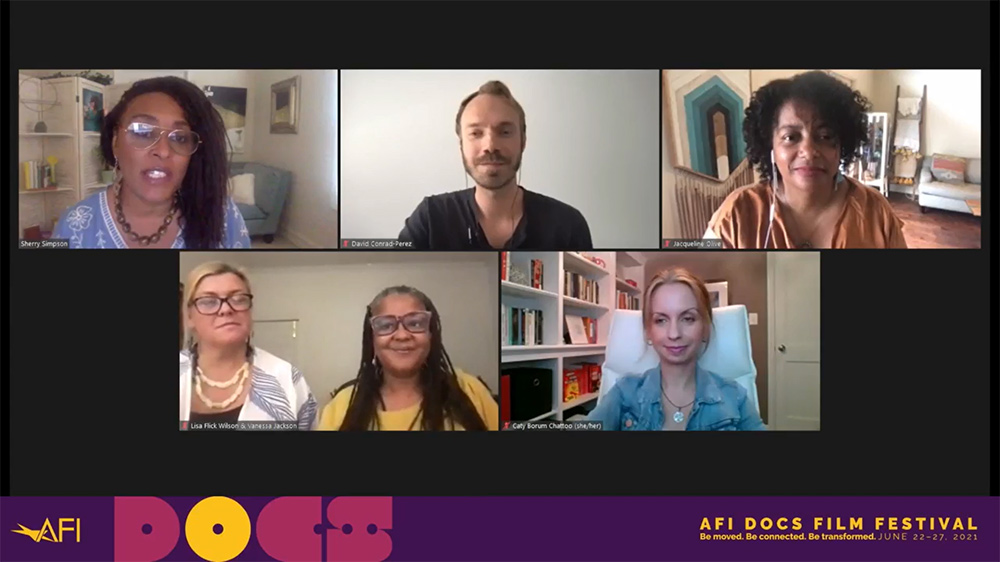
The role that impact production plays in making diverse programming do the important job of connecting communities was also showcased. The Center for Media & Social Impact study Breaking the Silence: How Documentaries Can Shape the Conversation on Racial Violence in America and Create New Communities (which I co-authored, with David Conrad-Perez and Caty Borum Chattoo) showed that when audiences across the country watched Jacqueline Olive’s Always in Season, in sessions organized by ITVS, white and Black community members had unprecedented frank conversations that launched more planned collective action for change in their communities. A panel discussing the extensive impact plan organized by ITVS around Philly DA showed the importance of building this work into stations as they engage with their local communities. ITVS is linking up with local organizations, stations, national organizations concerned with criminal justice reform, and with journalists over the next five years, using more than 20 films, on its “Stories for Justice” initiative. It began with Philly DA.
Maryland Public Television’s Travis Mitchell said, “Only public media can have these discussions free of agendas, corporate influence and politics. It’s the best place for Americans to have these difficult conversations.” Emmalee Hackshaw of Georgia Public TV has been organizing conversations among reformers, DAs and police, and found that they were choosing to continue their conversations once cameras were turned off.
Storytelling Matters
Yoni Brook, co-creator of Philly DA, summarized the takeaway for the Forum: “If you asked me before I made Philly DA, ‘Does filmmaking make a difference and change the conversation?’ I would have said, ‘I hope so, but I don’t know.’ But in making this project, we’d be in rooms with people who are making the change. The constant thing we heard from them is that the biggest obstacle to change is culture—entrenched ways of thinking. That was eye-opening. Storytelling does matter.”
Anselm Beach is a filmmaker and grad student in the MFA in Film and Media Arts Program at American University.
Patricia Aufderheide is a professor at American University in Washington, DC.




